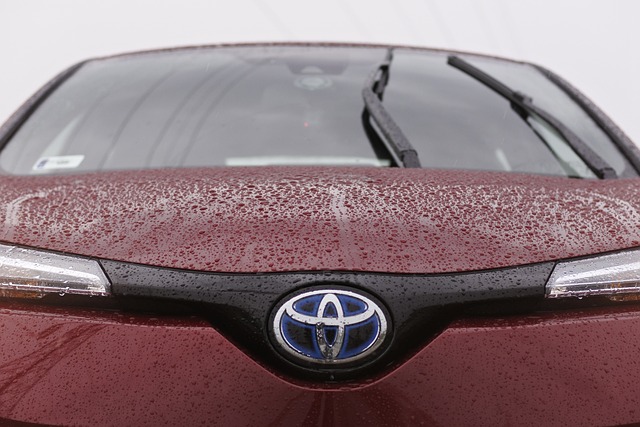Hydrophobic Coatings: Revolutionizing Vehicle Maintenance
The automotive world is constantly evolving, with innovations that enhance performance, safety, and convenience. One such advancement that's gaining traction is the application of hydrophobic coatings to vehicles. This cutting-edge technology is transforming the way we maintain and protect our cars, offering a blend of practicality and scientific ingenuity that's capturing the attention of car enthusiasts and everyday drivers alike.

The Science Behind Hydrophobic Coatings
Hydrophobic coatings are based on the principle of surface tension manipulation. At a microscopic level, these coatings create a layer of nanoparticles that significantly reduce the surface energy of the treated material. This causes water and other liquids to bead up and roll off instead of spreading and adhering to the surface.
The technology draws inspiration from nature, mimicking the water-repellent properties of lotus leaves. Known as the “lotus effect,” this phenomenon allows the plant to stay clean in muddy environments. Scientists have harnessed this concept and engineered it for automotive applications, creating coatings that can be applied to various vehicle surfaces.
Applications in the Automotive Industry
Hydrophobic coatings are versatile and can be applied to multiple parts of a vehicle. The most common applications include:
-
Windshields and windows: Improving visibility during rainy conditions and reducing the need for frequent wiper use.
-
Body panels: Keeping the vehicle cleaner for longer periods and making washing easier.
-
Wheels: Preventing brake dust accumulation and making cleaning less labor-intensive.
-
Headlights: Maintaining clarity and brightness by repelling water and dirt.
-
Interior fabrics: Protecting against spills and stains, extending the life of upholstery.
Benefits for Drivers and Vehicle Maintenance
The adoption of hydrophobic coatings offers numerous advantages for vehicle owners. First and foremost, it enhances safety by improving visibility in adverse weather conditions. The water-repellent properties of treated windshields allow raindrops to bead up and roll off quickly, reducing the reliance on wipers and minimizing visual obstructions.
Maintenance becomes significantly easier with hydrophobic coatings. Vehicles stay cleaner for longer periods, as dirt and grime have difficulty adhering to the treated surfaces. When washing is necessary, it requires less effort and water, making the process more environmentally friendly. This ease of cleaning extends to wheels and headlights, often the most challenging parts to maintain.
For those living in areas with harsh winters, hydrophobic coatings offer additional benefits. They can help prevent ice and snow from bonding to surfaces, making de-icing quicker and less damaging to the vehicle’s exterior.
Challenges and Considerations
While the benefits of hydrophobic coatings are substantial, there are some challenges to consider. The longevity of the coating can vary depending on environmental factors and the quality of the product used. Some coatings may need to be reapplied periodically to maintain their effectiveness.
The application process itself requires precision and expertise. Improper application can lead to uneven coverage or reduced effectiveness. As such, many car owners opt for professional application, which can add to the overall cost.
There’s also the consideration of how these coatings interact with traditional car care products. Some waxes and polishes may not be compatible with hydrophobic coatings, necessitating a shift in maintenance routines.
The Future of Hydrophobic Technology in Automotive
As research continues, we can expect to see advancements in hydrophobic coating technology. Future developments may include:
-
Self-healing coatings that can repair minor scratches and imperfections.
-
Integration of hydrophobic properties into the manufacturing process, eliminating the need for aftermarket application.
-
Coatings with enhanced durability, potentially lasting the lifetime of the vehicle.
-
Combination with other technologies, such as photocatalytic coatings that can actively break down pollutants.
The potential for hydrophobic coatings extends beyond just cars. We may see applications in public transportation, aviation, and even architecture, where water-repellent surfaces could revolutionize building maintenance.
Conclusion
Hydrophobic coatings represent a significant leap forward in vehicle maintenance and safety. By harnessing the power of nanotechnology, these coatings offer a range of benefits that extend from improved visibility to easier cleaning and long-term protection. As the technology continues to evolve, we can expect to see wider adoption across the automotive industry and beyond.
For car enthusiasts and everyday drivers alike, hydrophobic coatings offer a glimpse into the future of automotive care—a future where maintaining a vehicle’s appearance and functionality becomes easier, more efficient, and more environmentally friendly. As we continue to push the boundaries of what’s possible in automotive technology, innovations like hydrophobic coatings remind us that sometimes, the most impactful advancements come from the tiniest of particles.





